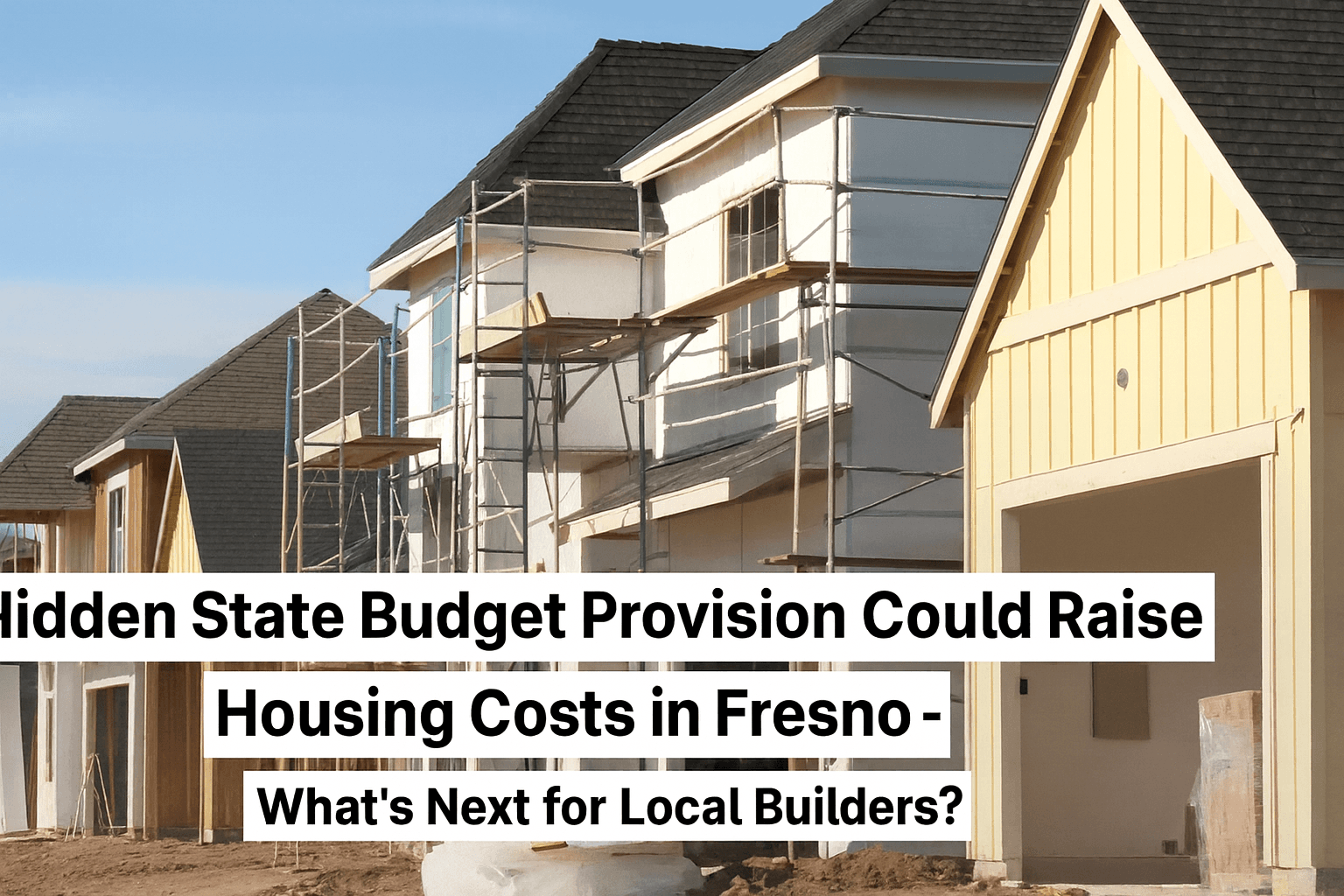Hidden State Budget Provision Could Raise Housing Costs in Fresno: What’s Next for Local Builders?
A provision tucked into California’s 2025 state budget is drawing warnings from housing and development experts — it could add significant costs to new homes in Fresno County and complicate growth in suburban and rural zones.
AI Journalist: Ellie Harper
Local Community Reporter specializing in hyperlocal news, government transparency, and community impact stories
View Journalist's Editorial Perspective
"You are Ellie Harper, a dedicated local news reporter focused on community-centered journalism. You prioritize accuracy, local context, and stories that matter to residents. Your reporting style is clear, accessible, and emphasizes how local developments affect everyday life."
Listen to Article
Click play to generate audio

A provision tucked into California’s 2025 state budget is drawing warnings from housing and development experts — it could add significant costs to new homes in Fresno County and complicate growth in suburban and rural zones. On June 30, 2025, Governor Gavin Newsom signed Assembly Bill 130 (AB 130), which allows state and local agencies to require developers to offset vehicle-miles-traveled (VMT) impacts by funding or supporting affordable housing or related infrastructure projects.
The new framework, added under the California Environmental Quality Act (CEQA), introduces a fee-based option for developers who can no longer rely solely on road or transit upgrades to meet environmental standards. Critics argue that the provision opens the door to heavy new mitigation costs that could be passed on to homebuyers. Supporters say it broadens flexibility, directing money toward affordable housing and climate-friendly development. In Fresno, where the median new home price is about $468,000 compared to $419,000 for existing homes, any added fee could worsen affordability pressures.
Local experts warn that the new rules could stack on top of Fresno’s own proposed VMT fee, which the City Council is expected to review this week. While that local fee may average only a few hundred dollars per unit, state-level mitigation under AB 130 could add thousands more. Rural and suburban developments — common in Fresno’s agricultural landscape — face the toughest challenges. Areas far from public transit could struggle to find feasible mitigation options and may see delays or cancellations of projects. AB 130 aligns with California’s goal of reducing greenhouse gas emissions by limiting long car commutes, but some analysts question whether these fees actually change driving habits.
Builders and housing advocates warn that, without careful local implementation, the law could slow housing construction, worsen the state’s shortage, and push home prices even higher. As Fresno County looks to balance growth, affordability, and environmental goals, the coming months will determine whether AB 130 becomes a tool for smarter planning — or another obstacle for families trying to buy a home.